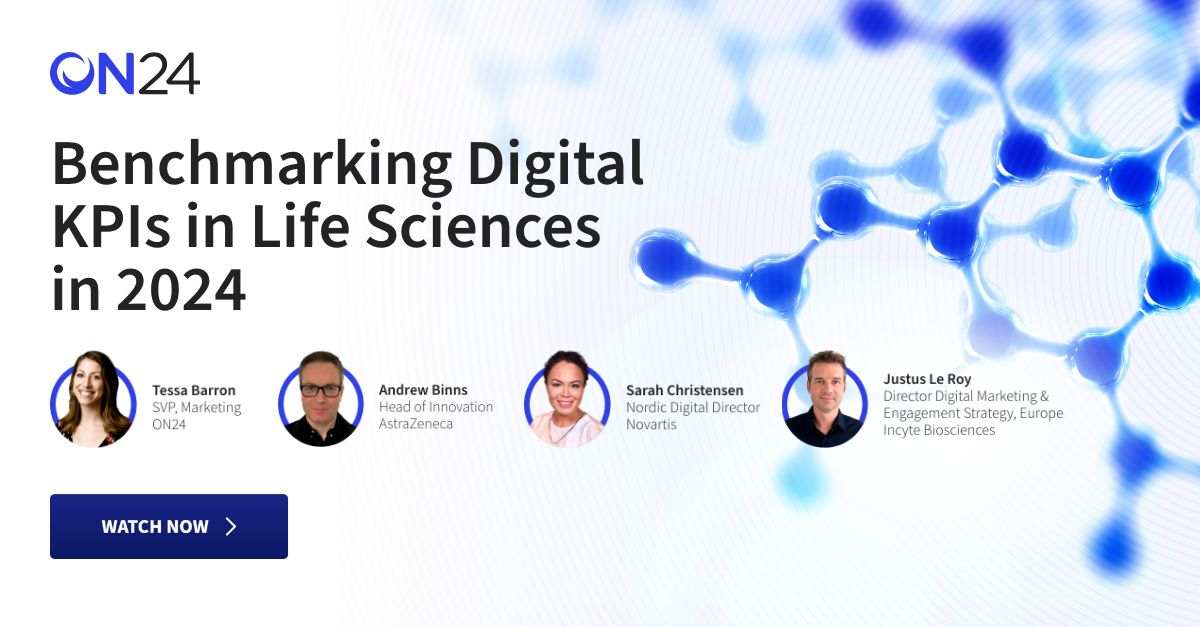The AIDA (Attention, Interest, Desire, Action) framework is a classic marketing model that guides the creation of compelling and effective marketing and sales activity. By using this model to break down phases of the customer journey and tailoring content to each, marketers can capture attention, pique interest, nurture desire, prompt action, and meet their key business objectives.
Here, we will delve into the AIDA model, offering specific advice and strategies for establishing improved digital content KPIs. With this advice, you can fashion content that truly resonates with your audience and attains your business objectives.
But by no means is the AIDA framework the only one in use, especially by B2B marketers. For example, ON24’s Blueprint for Predictable Pipeline Guide breaks the customer journey into six stages — three of which are before the purchase, and three of which occur after.
The AIDA model: what it is and why it matters for digital content performance
The AIDA model has been a cornerstone for marketers, providing a framework for comprehending the customer journey and developing more potent marketing strategies, including those for digital content.
During the webinar Benchmarking Digital KPIs in Life Sciences in 2024, Andrew Binns, Head of Innovation at AstraZeneca, detailed how he used the framework to assess his own content performance. You can watch the webinar to hear what he had to say.
The AIDA model is based on the idea that customers go through four stages when making a purchase decision:
-
- Attention: This marks the initial phase, where the customer first becomes aware of your product or service.
- Interest: This stage marks the customer’s burgeoning interest in your product or service, leading them to seek further information.
- Desire: At this stage, the customer develops a desire for your product or service and starts to consider making a purchase.
- Action: The final stage is where the customer takes action and makes a purchase.
The AIDA model is a strategic tool to enhance the efficacy of digital content, ensuring that each phase of the customer journey is addressed. By crafting content that captivates attention, sparks interest, nurtures desire, and propels action, the potential to convert leads into customers through engagement is significantly heightened.
But what specific KPIs can be used for these stages? Read on for some examples by channel.
Attention KPIs and metrics to benchmark, track and optimize

To use an old-fashioned expression, getting attention in marketing is about eyeballs. How many people within your target market can you reach and get your message in front of?
Here are some suggestions to consider. Like all of these suggestions, this list is far from exhaustive, and some may overlap with other stages.
| Channel or tactic | Possible KPIs to measure attention |
| Account-based marketing (ABM) | % reach for target accounts |
| Webinars and virtual events | Registrations |
| Video | Video impressions
Video views |
| Email marketing | Messages delivered
Open rate |
| Organic search | Page views
Unique visitors Organic traffic Search impressions Inbound links |
| Paid search | Impressions
Click-through rate (CTR) |
| Social media | Followers
Reach |
| PR | Media mentions
Share of voice |
Important tip: It can be all too easy to treat attention KPIs as little more than vanity metrics. Make sure that you choose and use them strategically, in line with your business goals.
Interest KPIs and metrics to benchmark, track and optimize

The next stage of the AIDA model is about interest. How well is your content resonating with audiences once you’ve got it in front of them?
Here are some examples that show your audience is taking the next step:
| Channel or tactic | Possible KPIs to measure interest |
| Account-based marketing (ABM) | % coverage for target accounts
Engagement rate |
| Webinars and virtual events | Attendance
Registration-to-attendee conversion rate Content downloads Likes and reactions Engagement rate Total watch time |
| Video | Video completion rate
Total watch time |
| Email marketing and marketing automation | Click-through rate (CTR)
Number of engaged contacts |
| Organic search | Bounce rate (lower is better)
Return visitors Total pages viewed |
| Paid search | Click-through rate (CTR)
Conversion rate |
| Social media | Mentions
Engagement rate |
| PR | % age citing they found out about your brand from coverage |
Success with interest KPIs are a good sign that your content is driving engagement. You can also use this data to optimize your content by turning webinars into video clips. ON24 customers can automatically turn their webinars into engaging video content through Key Moments, resulting in enhanced activity after the webinar.
Desire KPIs and metrics to benchmark, track and optimize

The KPIs under the desire area are a sign that your audience has more than general interest — they are likely to have the intent to continue their journey, such as by making a purchase.
Use the examples below to consider how you can measure desire (such as buyer intent) when your audience engages with your content.
| Channel or tactic | Possible KPIs to measure desire |
| Account-based marketing (ABM) | Number of accounts showing intent |
| Webinars and virtual events | Total clicks on calls-to-action
Chat with a sales rep Survey or poll response showing intent Registration for a webinar Download of BOFU content such as a case study |
| Video | Visits to landing page after watching video |
| Email marketing and marketing automation | Click-through rate (CTR) on MOFU or BOFU asset
Lead score Number of MQLs |
| Organic search | Page visits and unique visitors to high-intent content |
| Paid search | Click-through rate (CTR) on high-intent keywords
Conversion rate |
| Social media | Recommendations and questions
Engagement rate |
Tip: For more examples of using event KPIs to track intent, download our guide on Beyond Digital Events: A Strategy to Uncover Buying Signals.
Action KPIs and metrics to benchmark, track and optimize

The final stage of AIDA is about taking action. In many cases, these metrics will refer to how well your content drives conversions that contribute towards key business goals.
| Channel or tactic | Possible KPIs to measure action |
| Account-based marketing (ABM) | Opportunities with target accounts
Total pipeline with target accounts |
| Webinars and virtual events | Meeting bookings
Demo registrations Free trial sign-ups |
| Email marketing and marketing automation | Click-through rate (CTR) on sales emails
Number of SQLs, SALs and opportunities |
| Organic search | Conversion rate from organic visits |
| Paid search | Click-through rate (CTR) on high-intent keywords
Conversion rate to free trial, demo or meeting bookings |
| Social media | Recommendations and questions
Engagement rate |
But conversion alone isn’t enough for effective sales and rep enablement. The best results come when reps have a full picture of how a contact or account has been engaging so they can target them with relevant and personalized messaging.
For those using ON24, the Prospect Engagement Profile is a valuable tool for providing reps with the information they need.
Get the latest B2B marketing and digital engagement benchmarks data
To find out how your own performance compares to thousands of other organizations across the world, download the 2024 Digital Engagement Benchmarks Report for a more in-depth look at the latest digital content performance trends and to plan your content strategy.

